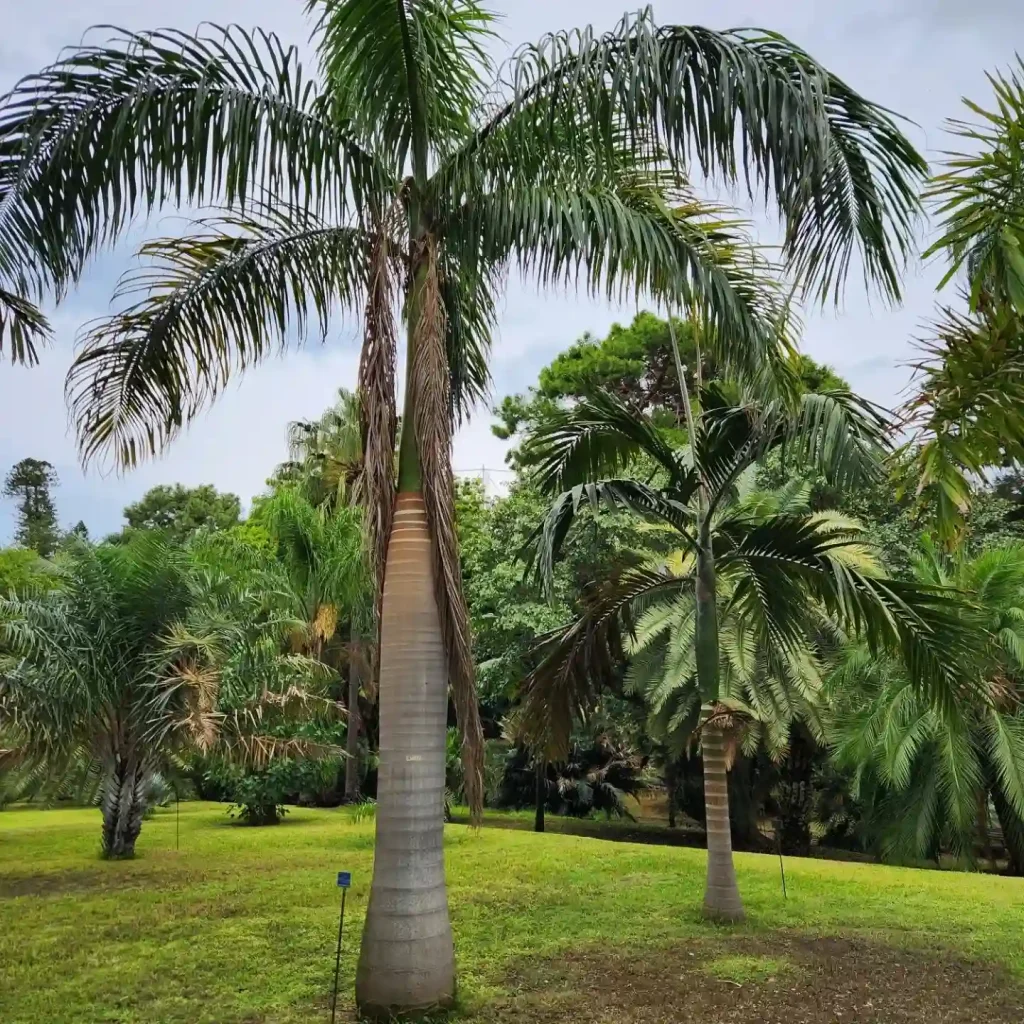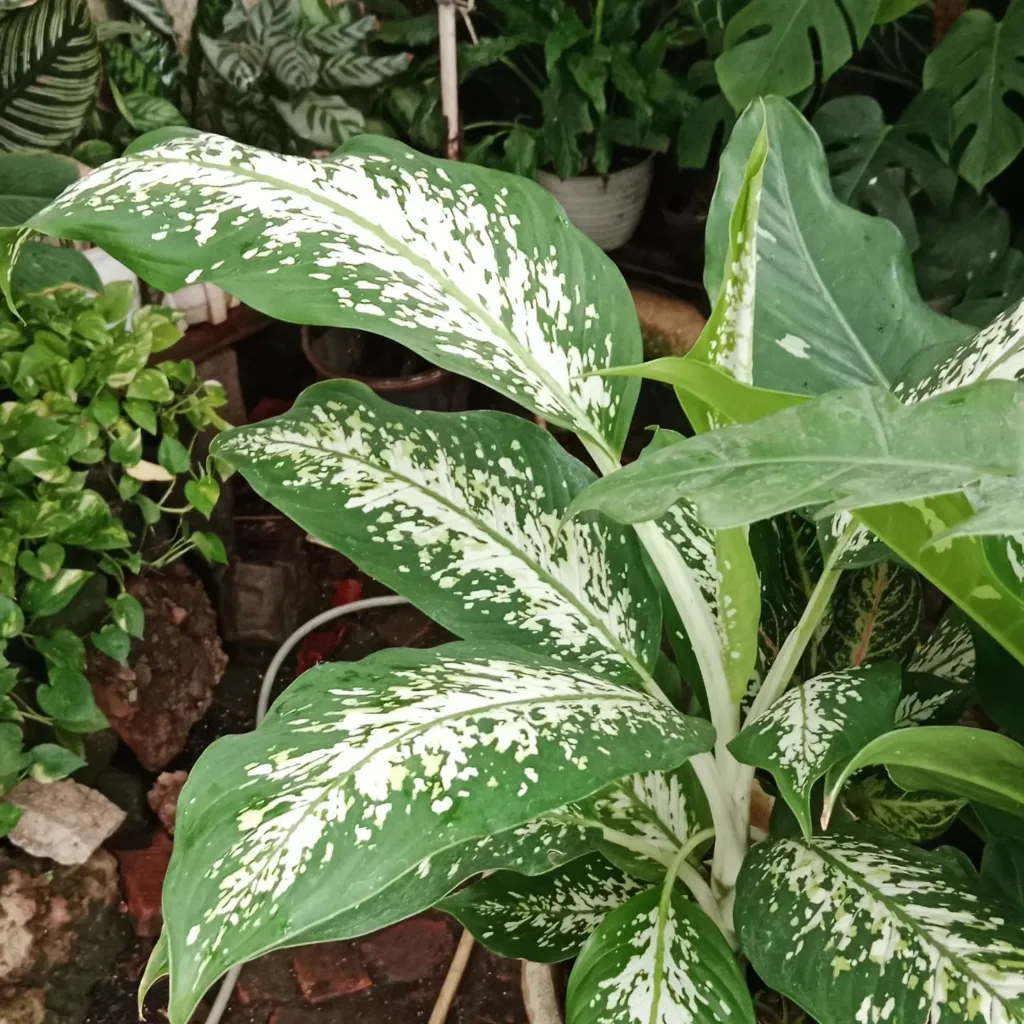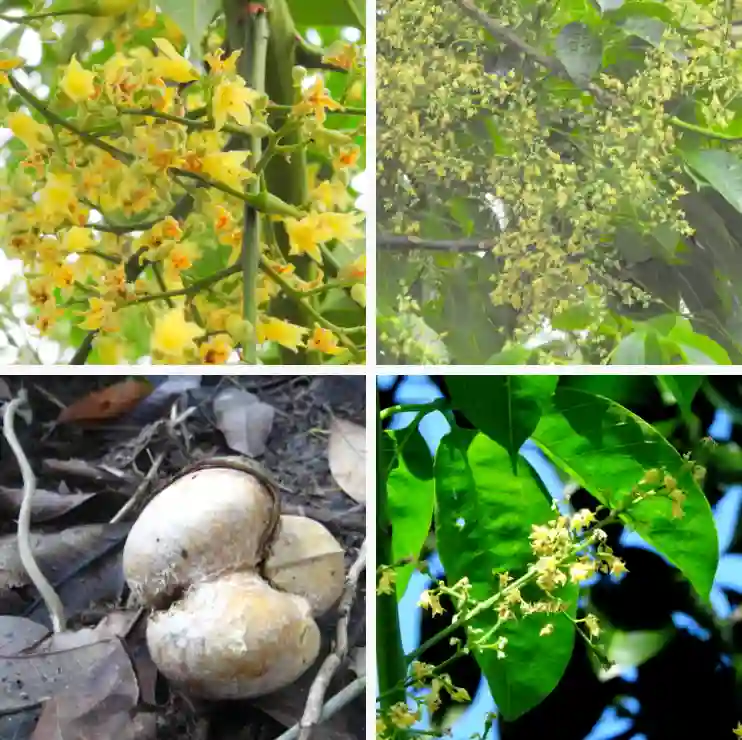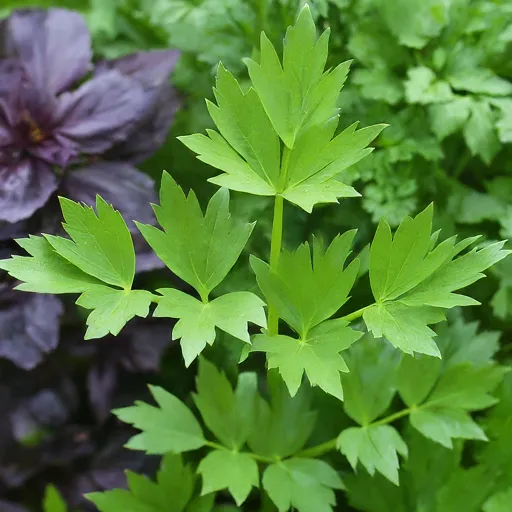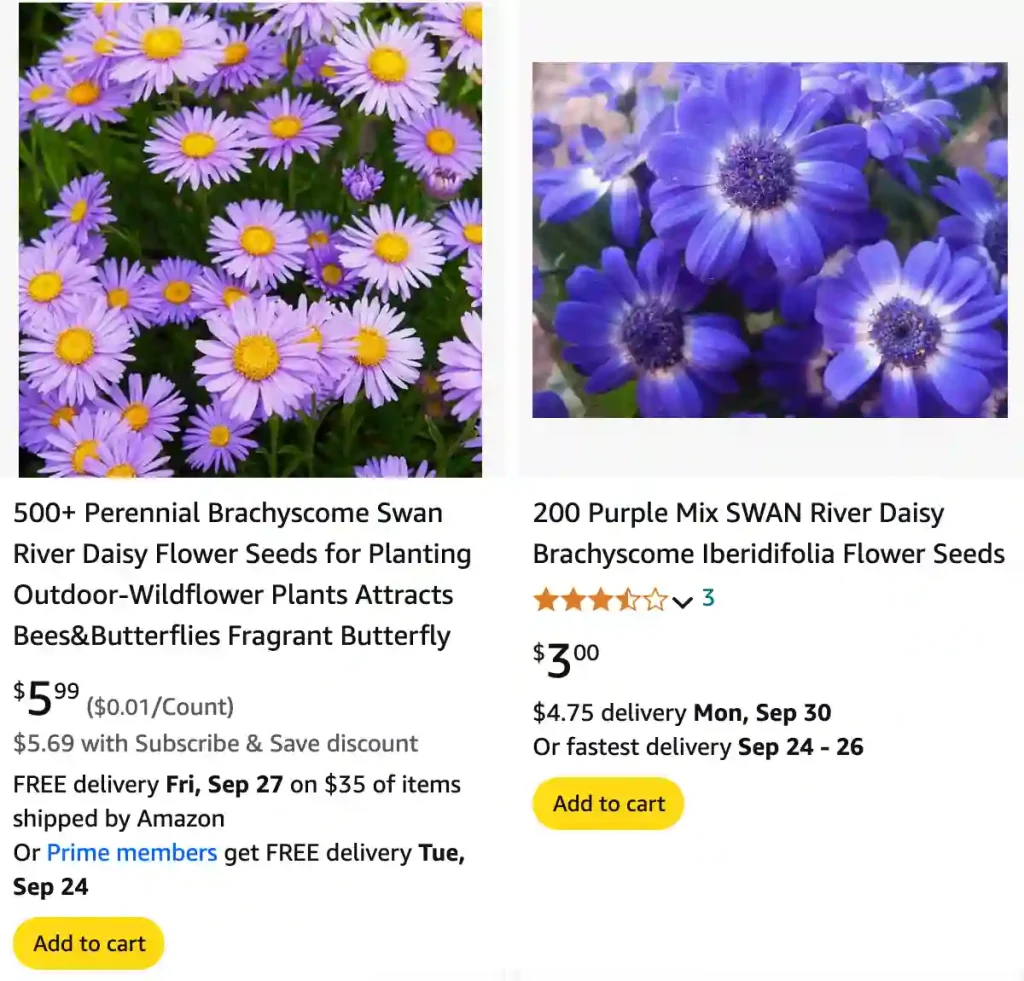
FAQs About Brachyscome Genus
As a plant enthusiast, I often find myself exploring various species and their unique characteristics. One genus that has caught my attention is Brachyscome, belong to the Asteraceae family, known for its vibrant flowers and hardy nature. In this article, I’ll address some frequently asked questions about Brachyscome, sharing my experiences and insights along the way.
Brachyscome species
- Brachyscome abercrombiensis P.S.Short
- Brachyscome aculeata (Labill.) Cass. ex Less.
- Brachyscome ascendens G.L.Davis
- Brachyscome assamica C.B.Clarke
- Brachyscome barkerae P.S.Short
- Brachyscome basaltica F.Muell.
- Brachyscome bellidioides Steetz
- Brachyscome billabongensis P.S.Short
- Brachyscome blackii G.L.Davis
- Brachyscome breviscapis C.R.Carter
- Brachyscome brownii P.S.Short
- Brachyscome campylocarpa J.M.Black
- Brachyscome casstiana P.S.Short
- Brachyscome chrysoglossa F.Muell.
- Brachyscome ciliaris (Labill.) Less.
- Brachyscome coongiensis Munir
- Brachyscome cuneifolia Tate
- Brachyscome curvicarpa G.L.Davis
- Brachyscome dalbyensis P.S.Short
- Brachyscome debilis Sond.
- Brachyscome decipiens Hook.f.
- Brachyscome dichromosomatica C.R.Carter
- Brachyscome dimorphocarpa G.L.Davis
- Brachyscome discolor C.Stuart ex Benth.
- Brachyscome dissectifolia G.L.Davis
- Brachyscome diversifolia (Graham ex Hook.) Fisch. & C.A.Mey.
- Brachyscome elegans J.Kost.
- Brachyscome eriogona (J.M.Black) G.L.Davis
- Brachyscome exilis Sond.
- Brachyscome eyrensis G.L.Davis
- Brachyscome foliosa P.S.Short
- Brachyscome formosa P.S.Short
- Brachyscome georginensis P.S.Short
- Brachyscome gilesii P.S.Short
- Brachyscome glandulosa Benth.
- Brachyscome goniocarpa Sond. & F.Muell.
- Brachyscome gracilis G.L.Davis
- Brachyscome graminea (Labill.) F.Muell.
- Brachyscome humilis G.Simpson & J.S.Thomson
- Brachyscome iberidifolia Benth.
- Brachyscome kaputarensis P.S.Short
- Brachyscome leptocarpa F.Muell.
- Brachyscome lineariloba (DC.) Druce
- Brachyscome linearis Druce
- Brachyscome longiscapa G.Simpson & J.S.Thomson
- Brachyscome lucens Molloy & Heenan
- Brachyscome melanocarpa Sond. & F.Muell.
- Brachyscome microcarpa F.Muell.
- Brachyscome mittagongensis P.S.Short
- Brachyscome montana G.Simpson
- Brachyscome muelleri Sond.
- Brachyscome muelleroides G.L.Davis
- Brachyscome multifida DC.
- Brachyscome nivalis F.Muell.
- Brachyscome nodosa P.S.Short & K.Watan.
- Brachyscome nova-anglica G.L.Davis
- Brachyscome obovata G.L.Davis
- Brachyscome paludicola P.S.Short
- Brachyscome papillosa G.L.Davis
- Brachyscome papuana Mattf.
- Brachyscome parvula Hook.f.
- Brachyscome perpusilla J.M.Black
- Brachyscome petrophila G.L.Davis
- Brachyscome pinnata Hook.f.
- Brachyscome procumbens G.L.Davis
- Brachyscome ptychocarpa F.Muell.
- Brachyscome pusilla Steetz
- Brachyscome radicans Steetz
- Brachyscome radicata Hook.f.
- Brachyscome rara G.L.Davis
- Brachyscome readeri G.L.Davis
- Brachyscome rigidula (DC.) G.L.Davis
- Brachyscome riparia G.L.Davis
- Brachyscome rudallensis P.S.Short
- Brachyscome salkiniae P.S.Short
- Brachyscome scapigera (Sieber ex Spreng.) DC.
- Brachyscome segmentosa F.Muell.
- Brachyscome sieberi DC.
- Brachyscome simulans P.S.Short
- Brachyscome sinclairii Hook.f.
- Brachyscome smithwhitei P.S.Short & K.Watan.
- Brachyscome spathulata Gaudich.
- Brachyscome staceae P.S.Short
- Brachyscome stolonifera G.L.Davis
- Brachyscome stuartii Benth.
- Brachyscome tadgellii Tovey & P.Morris
- Brachyscome tamworthensis P.S.Short
- Brachyscome tasmanica P.S.Short
- Brachyscome tatei J.M.Black
- Brachyscome tenuiscapa Hook.f.
- Brachyscome tesquorum J.M.Black
- Brachyscome tetrapterocarpa G.L.Davis
- Brachyscome trachycarpa F.Muell.
- Brachyscome trisecta P.S.Short
- Brachyscome walshii P.S.Short
- Brachyscome watanabei P.S.Short
- Brachyscome whitei G.L.Davis
- Brachyscome willisii P.S.Short
- Brachyscome xanthocarpa D.A.Cooke
Is Brachyscome a Perennial?
Yes, Brachyscome is a perennial plant. This means that it can live for more than two years, providing an enduring splash of color in gardens. I’ve found Brachyscome to be a reliable performer in my landscape, returning year after year with its cheerful blooms. It thrives in various conditions, making it a favorite among gardeners looking for long-lasting beauty.
How to Grow Brachyscome?
Growing Brachyscome is relatively straightforward. I usually start by selecting a well-draining soil mix, as good drainage is crucial for preventing root rot. These plants prefer full sun to partial shade, so I often place them in areas where they can soak up plenty of light.
When it comes to planting, I typically wait until the last frost has passed. I space the plants about 12 to 18 inches apart to allow for their natural spreading habit. Regular watering is essential during the establishment phase, but once they’re settled, Brachyscome is quite drought-tolerant. I’ve noticed that deadheading spent flowers encourages more blooms, so I make it a habit to snip them off regularly.
How to Pronounce Brachyscome?
I remember the first time I saw the word “Brachyscome” and wasn’t sure how to pronounce it. It’s pronounced as “brak-ih-skohm.” Knowing the correct pronunciation adds a bit of confidence when discussing this lovely genus with fellow plant lovers.
Is Brachyscome Toxic to Dogs?
One of the questions I often come across is whether Brachyscome is toxic to dogs. Fortunately, Brachyscome is not considered toxic to dogs or other pets. I always check the toxicity of plants before adding them to my garden, especially since I have pets. It’s reassuring to know that my furry friends can roam freely without risk from this charming flower.
Is Brachyscome Deer Resistant?
If you live in an area with deer, you might be wondering if Brachyscome is deer resistant. In my experience, Brachyscome tends to be less appealing to deer compared to other plants. While nothing is deer-proof, I’ve found that the foliage’s texture and the plant’s growth habit can deter these herbivores.
Is Brachyscome Poisonous?
In addition to being safe for dogs, Brachyscome is generally not considered poisonous to humans either. I appreciate knowing that I can handle these plants without fear of adverse effects. This safety factor makes them ideal for family gardens where children may be playing.
When to Plant Brachyscome?
The best time to plant Brachyscome is in the spring, after the last frost. I’ve had great success by planting in early spring, allowing the plants to establish before the heat of summer sets in. In some climates, fall planting can also work well, provided the winter is mild.
How to Care for Brachyscome?
Caring for Brachyscome is relatively low-maintenance. Regular watering is crucial, especially during dry spells. I always ensure the soil remains moist but not waterlogged. Fertilizing with a balanced fertilizer in the spring helps encourage healthy growth and vibrant blooms.
How to Propagate Brachyscome?
I love propagating Brachyscome, as it’s quite easy. You can take cuttings in spring or divide established plants in early fall. I typically take stem cuttings of about 4 to 6 inches and place them in a pot with a well-draining mix. Keeping them moist and in indirect sunlight usually results in successful root formation.
What to Plant with Brachyscome?
Brachyscome pairs beautifully with other drought-tolerant plants like succulents, ornamental grasses, and lavender. In my garden, I often combine it with Salvia and Verbena for a colorful, vibrant display. Their contrasting textures and colors create a delightful visual effect.
Common Problems with Brachyscome
While Brachyscome is generally hardy, it can face some issues. Overwatering is a common problem that can lead to root rot, which I’ve experienced firsthand. I’ve learned to check the soil moisture before watering to prevent this. Pests like aphids and spider mites may occasionally appear, but I find that a gentle spray of water usually helps to dislodge them.
Can You Grow Brachyscome Indoors?
While Brachyscome thrives outdoors, I’ve seen some success growing them indoors as well. If you have a bright, sunny window, you can cultivate Brachyscome in pots. Just be mindful of their watering needs and ensure they have adequate drainage.
In conclusion, Brachyscome is a delightful genus that offers a wealth of color and joy to any garden. Whether you’re a seasoned gardener or a novice, these hardy plants can brighten your outdoor space with minimal fuss.
If i die, water my plants!
